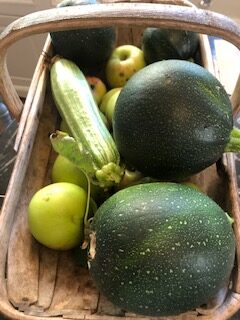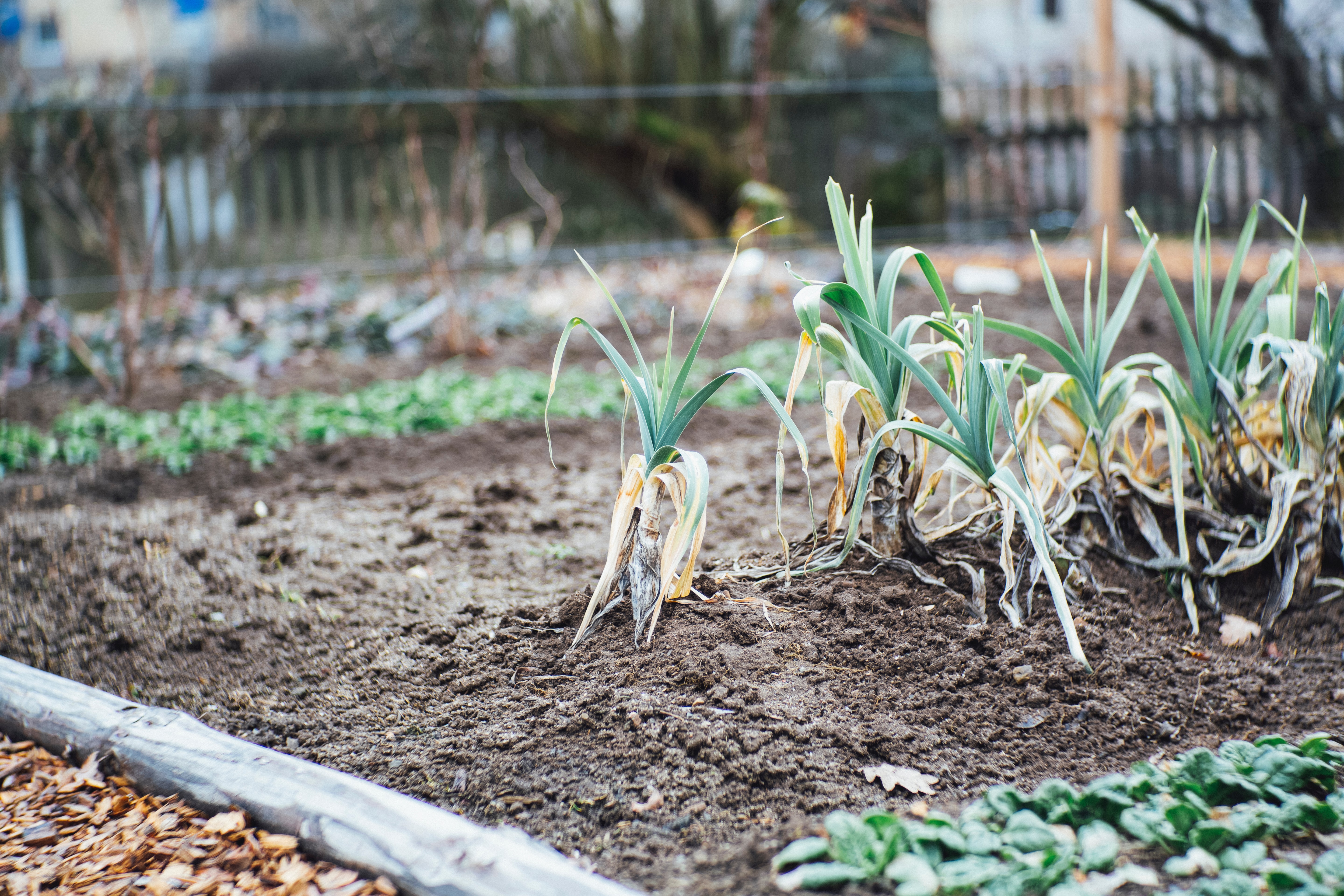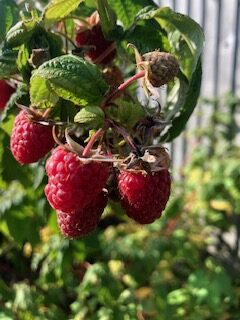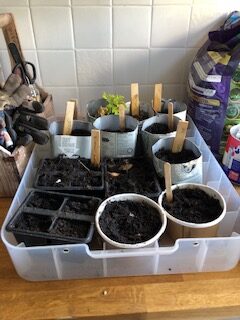
Perhaps I watched too many apocalyptic disaster movies in the 7os, but I have always had a little part of my brain telling me that I should be prepared for anything. That means, above all, being able to feed myself should civilisation, as we know it, fall into chaos.
Don’t worry, I am not a bonkers survivalist, but I do think that we owe it to ourselves to learn a little resilience and self-reliance. Rising food prices and shortages, climate change and global instability means that if we can contribute even a little to our own food stocks, we should. If nothing else, growing our own food makes us appreciate it (and therefore not waste it) and value those that labour every day to provide for us.
As anyone who has attempted growing their own food will tell you, it is hard and fraught with difficulties: garden pests, frosts, storms, heat and drought all work against us. It is always rather miraculous to me that we can produce anything at all. But we do and the challenge makes the reward so much sweeter.

Image: Markus Spiske on Unsplash
The joy of playing in the dirt
Unfortunately, my MS means that I cannot garden nearly as vigorously or effectively as I should like. However, it doesn’t stop me from gardening at all. In fact, the time I spend outside makes me feel immensely better – even if it takes a toll on my energy levels. As a child, I loved playing in the dirt; as an adult, I’m no different. And no doubt this is why:
There’s a reason that the rose or veggie garden is often a person’s “happy place.” There is a natural antidepressant called Mycobacterium vaccae found in soil. The bacterium stimulates serotonin production, the stuff that makes you feel happy.
https://www.promixgardening.com/en/tips/gardening-health-benefits
Not only does the soil stimulate our happy hormones, but it can give us a Vitamin B hit (if we don’t clean our hands too perfectly.) Its other health benefits include physical well being through exercise and mental well being from immersion in nature.
And if you are growing fruit and vegetables, you get to enjoy organic, zero miles food for very little cost.
Since I can’t ‘dig for victory’, I have become rather focused on getting the most from my garden with the least physical effort. One way that we manage that is by planting lots of fruit trees and fruit canes.


The lazy gardener
My wonderful and very old apple tree gives us enough cooking apples for about a year. I’ve frozen pounds of them and stored the rest in the cool. No, they don’t have the bright waxy sheen of the supermarket ones, but they are super tasty.
In the last few years, we have planted a sort of orchard in the garden with mulberries, apples, pears, plums, quince and cherries in side beds and the vegetable patch. They require little more than watering when it is very hot and the occasional prune. If you want to be a lazy gardener like me – plant a tree!
The next easiest thing to do is soft fruits. We have numerous raspberry canes, which I have divided to make more. Our currants and gooseberries are sometimes raided by the birds. But that’s okay. They need feeding too.

Herbs are perhaps the easiest of all and take up little room. A salad supplemented with various herbs becomes a thing of beauty. You can always grow some inside with sprouts to give you a macro salad for a micro price.
My favourite tip was given by a friend who discovered that Bigga Dried Peas (which cost 90p at Sainsbury’s) are ideal for pea shoots. I simply pop then in the soil, water and enjoy when they are about three inches high.
Seeds
By far the most economical way to garden is to buy seeds and perhaps bring them on a little in a greenhouse or window sill. Some plants, like rocket, don’t even need that, they will merrily self-seed all round your garden (mine even made it to the front garden) and feed you with no effort in perpetuity. Mint too is a terror for invading garden space, but I love mint and am happy for it to grow anywhere.
When you grow your own, there are invariably little surprises the following spring. This year, I’ve found some spring onions, chard and parsley that I can make no claims on nurturing.
Once you have planted your seeds and brought them to maturity, you can collect those seeds and use them again. Dry them carefully and keep in a dark, cool place. Last year, it was so hot that my Indian corn simply wilted. It did manage a few cobs though and I rescued those in hopes of better results this year.

Free food
I have my seeds from last year and my wish list for this, and I have a couple of experiments I’d like to conduct. One is to practise companion planting using the three sisters of Native American agriculture: corn, beans and squash and the other is gardening with kitchen scraps and more unusual crops.
You can regrow almost anything and the link here gives you instructions on how: https://www.ruralsprout.com/regrow-vegetables/ This year, I’ve also tried to grow some more exotic seeds: chickpeas, lemons, olives and dates. It might be a complete failure, of course, but it has cost me only a few minutes’ effort. Even if they simply turn into pretty plants, I shall be very happy with that.

The key component to any gardening is patience and growing from seed requires a great deal of it, even from the most accommodating of plants. But watching a beautiful plant emerge from something as tiny as a seed awakens in us proper awe for the mysteries of nature.
Gardening for all
Few things give me as much pleasure as my garden and the produce it yields. And although we are not all able to do the heavy work of gardening, we still can enjoy doing what we can. My sessions actually digging/planting/weeding are very short but give me a great deal of satisfaction and necessary exercise. Planning and preparing the garden are equally enjoyable and growing little things inside, likewise.
Though I doubt we will need to be self-sufficient any time in the near future, we can always venture towards self-sufficiency to improve our health; make a positive impact on the environment and provide ourselves with delicious, fresh food.
And if we’re canny, we can do it for almost no cost at all.
NB
My lovely friend Elizabeth is coming to visit from America on Friday, so I shan’t be writing a post next week. We shall be too busy chatting and drinking tea. But I shall be back after that. I hope you’ll join me then.
